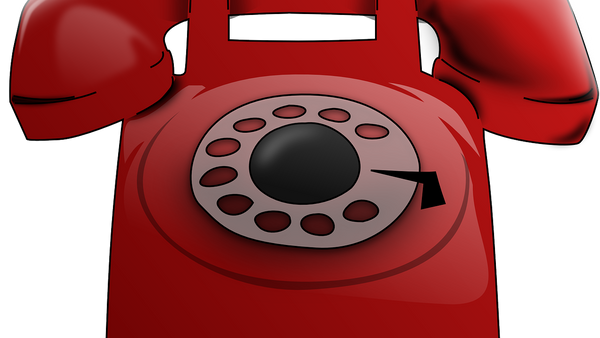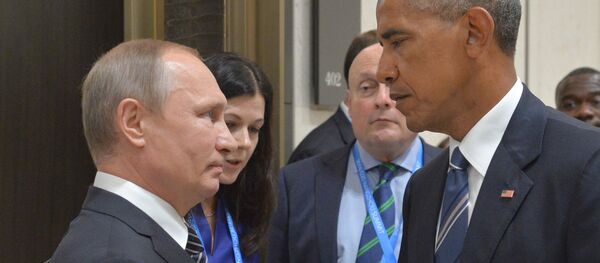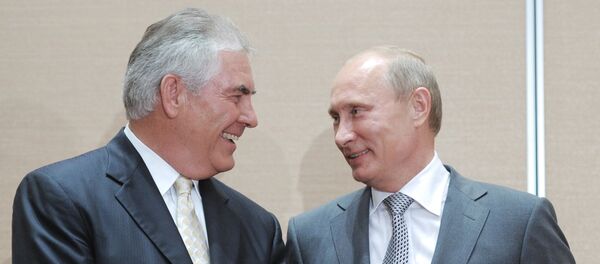A senior US official was cited Monday by NBC News as saying Obama notified Putin on October 31 that international law on warfare also extends to actions in cyberspace and that Russia would be held to account based on that standard.
Officials were quoted in the report as saying the Obama administration had never before taken the dramatic step of using the "red phone" hotline system between Washington and Moscow.
Phone Talks
Usually, there is a procedure to organize phone conversations between world leaders. For example, US President-elect Donald Trump wants to talk to German Chancellor Angela Merkel.
It is apparent that he cannot simply call her on a mobile phone or send her a couple of text messages.
In such cases, a special protocol is engaged and staffs of the two administrations as well as other senior officials need to do the groundwork.
"When there is an established relationship between two countries, it might be as simple as one situation room calling its counterpoint and saying my head of state wants to speak to yours," Stephen Yates, who worked as deputy national security adviser to former US Vice-President Dick Cheney, was quoted as saying by BBC.
However, when relations between the leaders are not that close an ambassador should make a formal request on behalf of the country’s leader. The sides discuss the agenda and reasons for the conversation. If agreed the talks then need to be arranged to the busy schedule.
In 2014, Yahoo News correspondent Olivier Knox spoke to aides who worked for Barack Obama, George W. Bush and Bill Clinton about US president’s phone diplomacy.
Before the American president has a phone conversation with another world leader, an aide brings him a dossier prepared by the National Security Council (NSC). The file includes an intelligence portrait of the person the president wants to call, including information about the personality, their health and loved ones.
According to Knox, despite the latest developments in telecommunications, "it is a technology developed in the 19th century that still rules."
"It’s immediate. It’s relatively easy to connect and to secure, but [is] still very personal. And basically everyone has a phone," a former national security official said in an interview with the journalist.
Interestingly, since Watergate, phone calls by the US president are not recorded, according to some sources. But up to three national security staffers are usually listening to the audio and typing.
A presidential translator is another person who listens to what the US president is discussing with other leaders. However, before getting access to such high-level diplomacy, translators must pass security clearances, background checks and even polygraph tests.
'The Red Phone'
The co-called "Red Phone" is a Cold War-era communications systems connecting Moscow to Washington, especially in moments of crises. However, the system was never a literal telephone.
During the crisis, Washington took nearly three hours to receive and decode Nikita Khrushchev’s 3,000-word message, a dangerously long time for a crisis situation.
On June 20, 1963, in Geneva, representatives of the US and the Soviet Union signed a "Memorandum of Understanding Regarding the Establishment of a Direct Communications Line."
The hotline was established to inform each other about certain incidents, including related to nuclear energy, as well as snap troops movements, that could be regarded as a provocation by the opposite side.
The Moscow-Washington hotline was intended for text only. It cannot be used to transmit speech, only to transmit messages, schemes and diagrams. Initially, it began as teletype, and then converted to fax and later, since 2008, to email.
In the US, the hotline system is located at the National Military Command Center, at the Pentagon. Previously, the system was regularly tested with messages including excerpts of classical literature works and encyclopedias.
On New Year’s Eve and on August 30, the hotline’s anniversary, greetings replaced test messages – at least, this happened in the 1980s.
"The myth of the red phone hotline, that the president could call the Kremlin whenever it suited him, came from a wide-range of pop culture sources," author and journalist Tom Clavin wrote in a piece for Smithsonian.com.
For example, in the 1964 movie by Stanley Kubrick "Dr. Strangelove," Peter Seller’s President Merkin Muffley talks to Soviet Premier Dimitri Kisov over a red phone.
When it Was Used
The first message transmitted over the hotline was on August 30, 1963. Washington sent Moscow the text: "The quick brown fox jumped over the lazy dog's back 1234567890."
The first official use of the hotline by the US was after President John F Kennedy was assassinated on November 22, 1963.
The Soviet Union officially used the "Red Phone" for the first time on June 5, 1967 when the Six-Day War broke out between Israel and a group of Arab countries.
Moscow wanted to know whether the US was behind an attack by the Israeli Army on Egypt. In turn, US President Lyndon Johnson said Washington was not involved in the conflict.
In addition, the US and Russia shared information over the hotline during the third Indo-Pakistani War in 1971. At the time, communications were initiated by US President Richard Nixon.
In 1986, Ronald Raegan used the "Red Phone" over the arrest and espionage charges against American journalist Nicholas Daniloff. Washington insisted that Daniloff was arrested on purpose, in response to the arrest of Soviet physicist Gennady Zakharov by the FBI. After tough talks, the sides made a "prisoner swap" without official charges.
The hotline was also used in the 2000s, including for discussion of the US invasion of Iraq in 2003.
The current administration had never used the hotline before Obama’s call to Putin about "Russian hackers." However, the situation was commented on by Kremlin Spokesperson Dmitry Peskov who said that a "regular closed communications line" was used for the conversation.









